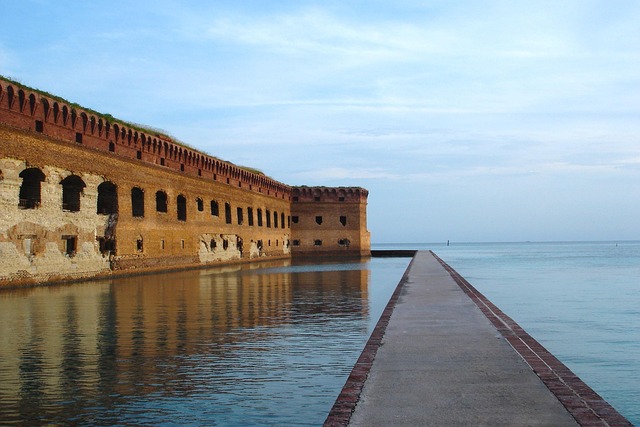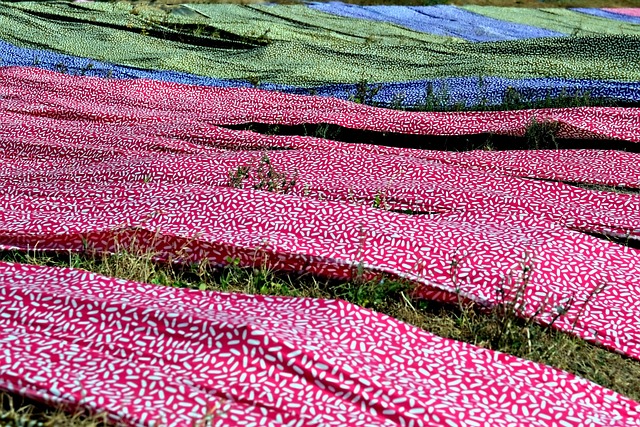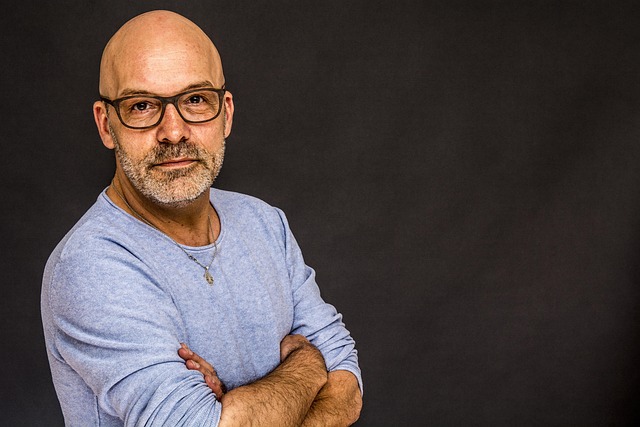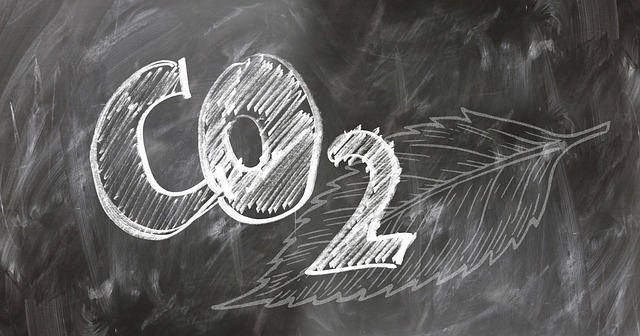Restore Your Fort Collins Home with Local Structural Drying Experts

After a fire in Fort Collins, CO, Structural Drying is vital for safe, healthy living. Reliable Wate…….
In the heart of Colorado, nestled among the majestic Rocky Mountains, lies Fort Collins—a vibrant city renowned for its innovative approach to sustainable development, particularly in the realm of structural drying. “Structural Drying Fort Collins CO” is not merely a phrase but a transformative concept that has captured global attention due to its potential to revolutionize building practices and enhance energy efficiency. This article aims to unravel the intricate web of this practice, exploring its definition, historical roots, international impact, economic implications, technological innovations, regulatory landscape, challenges, and future prospects. By delving into these aspects, we will uncover why Structural Drying Fort Collins CO is not just a local phenomenon but a significant movement with global reach.
Structural drying, in its essence, is a holistic approach to building design and construction that emphasizes energy efficiency and environmental sustainability. At its core, it involves optimizing the structural components of buildings to minimize heat transfer, thereby reducing energy consumption for heating and cooling. Fort Collins, Colorado, has emerged as a pioneer in this field, adopting innovative strategies that go beyond traditional construction methods.
The concept is rooted in the understanding that buildings can be designed and constructed with materials and techniques that naturally resist heat flow, thus creating more energy-efficient spaces. This approach leverages advanced engineering principles, smart material choices, and creative design to achieve optimal thermal performance. In Fort Collins, this has translated into a city-wide effort to incorporate structural drying techniques into new and retrofitted buildings, leading to significant energy savings and reduced carbon footprints.
Historically, the drive for structural drying can be traced back to the growing awareness of climate change and the need for sustainable building practices. As global temperatures rise, so does the demand for energy-efficient buildings. Fort Collins, with its commitment to environmental stewardship, has taken a leading role in embracing this challenge, setting an example for other cities worldwide.
The influence of Structural Drying Fort Collins CO extends far beyond the city’s boundaries, as it has captured the attention of architects, engineers, and policymakers globally. This innovative approach has sparked a global trend towards sustainable building design, with many countries adopting similar strategies to combat climate change.
International Adoption: Several nations have embraced structural drying principles, adapting them to their unique architectural and climatic contexts. For instance, Canada has implemented strict energy efficiency standards that encourage the use of structural drying techniques in new constructions. In Europe, countries like Germany and Scandinavia have long been pioneers in sustainable building, with many historic structures incorporating natural insulation and ventilation strategies akin to structural drying.
Emerging Markets: Even developing economies are recognizing the benefits of structural drying. As cities expand rapidly, there is a growing need for energy-efficient buildings to reduce strain on local infrastructure. Countries like India and Brazil are exploring these techniques to create more sustainable urban environments, often incorporating locally available materials to make them economically viable.
Regional Variations: Different regions face distinct climatic challenges, leading to variations in structural drying implementation. Desert regions, for example, focus on passive cooling methods and reflective roofs to combat extreme heat, while colder climates emphasize efficient insulation and heat retention strategies. These regional adaptations showcase the versatility of structural drying as a global solution.
The economic aspects of Structural Drying Fort Collins CO are multifaceted, impacting various sectors from construction to energy. This section explores the market dynamics, investment trends, and the broader economic implications of this practice.
Construction Industry: The adoption of structural drying techniques has created new opportunities in the construction sector. It demands specialized skills and knowledge, leading to job creation for engineers, architects, and skilled tradespeople. Companies specializing in energy-efficient building materials and systems have seen increased demand, fostering innovation and economic growth.
Energy Sector: One of the most significant economic impacts is on the energy sector. By reducing the energy required for heating and cooling, structural drying can lower operational costs for building owners and tenants. This translates into substantial long-term savings, making it an attractive investment for both commercial and residential properties. Energy efficiency also reduces the strain on local power grids, potentially lowering electricity prices for all consumers.
Government Incentives: Many governments worldwide offer incentives to encourage the adoption of sustainable building practices. Tax credits, grants, and rebates are common tools used to promote structural drying. For instance, the U.S. Department of Energy provides funding for research and development in energy-efficient construction technologies, while some local governments offer property tax exemptions for buildings meeting strict energy efficiency standards.
Market Growth: The global market for sustainable building materials and technologies is experiencing rapid growth. According to a recent report by Market Research Future (MRFR), the green building materials market is projected to reach USD 473.5 billion by 2027, growing at a CAGR of 12.6% from 2020 to 2027. This growth is largely driven by the increasing demand for energy-efficient buildings and the global push towards sustainability.
The field of structural drying has witnessed significant technological advancements, pushing the boundaries of what is possible in building design and construction. These innovations are shaping the future of sustainable development.
Smart Materials: One of the most prominent advancements is the development of smart materials that can adapt to changing environmental conditions. For example, phase-change materials (PCMs) can absorb and store large amounts of heat during the day and release it at night, naturally regulating indoor temperatures. These materials are highly effective in structural drying systems, providing efficient thermal mass.
Digital Design Tools: Advanced digital design software has revolutionized architectural planning. Building Information Modeling (BIM) allows architects to create detailed 3D models of buildings, enabling them to simulate and optimize structural drying strategies before construction begins. This technology ensures more accurate predictions of energy performance, reducing the risk of costly retrofits.
Automated Ventilation Systems: Intelligent ventilation systems are becoming increasingly common in energy-efficient buildings. These systems use sensors to monitor indoor air quality and temperature, automatically adjusting airflow to maintain optimal conditions. When combined with structural drying techniques, these systems further enhance energy efficiency.
Thermographic Imaging: Thermography is a powerful tool for visualizing heat flow in buildings. Advanced thermographic cameras can detect even minor thermal discrepancies, helping engineers identify areas where structural drying strategies can be improved or optimized. This technology plays a crucial role in both new construction and building retrofits.
The development of Structural Drying Fort Collins CO is greatly influenced by policies and regulations that govern the built environment. Governments worldwide play a pivotal role in promoting sustainable building practices through various legislative frameworks.
Building Codes: Many countries have incorporated stringent energy efficiency requirements into their national building codes. For instance, the International Energy Conservation Code (IECC) sets minimum standards for energy-efficient construction, including guidelines for structural drying. Compliance with these codes is mandatory for all new constructions, ensuring a baseline level of sustainability.
Incentivizing Sustainable Practices: Several jurisdictions offer financial incentives to encourage the adoption of green building practices. Tax breaks, grants, and low-interest loans are common tools used to promote energy-efficient buildings. For example, the U.S. Environmental Protection Agency’s (EPA) ENERGY STAR program provides recognition and rewards for buildings that meet strict energy performance criteria.
Green Building Certifications: Independent organizations like LEED (Leadership in Energy and Environmental Design) and BREEAM (Building Research Establishment Environmental Assessment Method) offer certification programs for sustainable buildings. These certifications set high standards for design, construction, and operational efficiency, including structural drying requirements. Many countries have incorporated these standards into their regulatory frameworks, making them mandatory or highly encouraged.
Long-term Policy Commitments: To ensure sustained progress, governments are making long-term commitments to sustainability. The Paris Agreement, for instance, is a global pact aiming to limit climate change by encouraging the adoption of sustainable building practices worldwide. Many countries have set ambitious targets to reduce carbon emissions from the building sector, driving the need for structural drying and other energy-efficient solutions.
Despite its numerous benefits, Structural Drying Fort Collins CO faces challenges and criticisms that must be addressed for widespread adoption. Understanding these issues is crucial in developing effective strategies to overcome them.
Initial Cost Concerns: One of the primary challenges is the higher upfront cost of implementing structural drying techniques. Advanced materials, specialized design, and energy-efficient systems often come with premium pricing, which can deter developers and building owners, especially in cost-sensitive markets. However, long-term savings and improved property values can offset these initial costs.
Lack of Standardization: The lack of standardized practices and codes for structural drying can create inconsistencies and challenges during the construction process. Different regions may have varying guidelines, making it difficult to implement uniform strategies across borders. Standardization is essential to ensure quality and consistency in the implementation of these techniques.
Design Complexity: Structural drying often involves intricate design solutions that require skilled professionals. The complexity of these systems can lead to longer design and construction timelines, increasing project costs. Ensuring access to qualified personnel and streamlined permitting processes is crucial for successful implementation.
Public Awareness and Education: Limited public awareness about structural drying and its benefits can hinder support for related policies and initiatives. Educating the public, builders, and policymakers about the long-term advantages of energy-efficient buildings is essential to fostering a culture of sustainability.
To gain insights into the practical application of Structural Drying Fort Collins CO, let’s explore a few case studies from around the globe that have achieved notable success and lessons learned from them.
The Copenhagen City Hall, Denmark: This iconic building is a prime example of successful structural drying integration. Designed to meet the strictest energy efficiency standards, it features a unique cross-laminated timber structure with phase-change materials for thermal mass. The result is an impressive 72% reduction in heating and cooling energy use compared to traditional buildings.
The Edge, Amsterdam, Netherlands: Recognized as one of the world’s most sustainable office buildings, The Edge sets benchmarks for structural drying and smart technology. Its design incorporates natural ventilation, solar shading, and a highly efficient building envelope. These strategies have led to a 75% reduction in energy consumption compared to comparable buildings.
The China World Trade Center, Beijing: As one of the largest green buildings in China, this complex showcases innovative structural drying techniques. By combining passive cooling methods with advanced insulation and smart HVAC systems, it achieves remarkable energy savings without compromising comfort or aesthetics.
Looking ahead, Structural Drying Fort Collins CO is poised for continued growth and evolution as the world accelerates its transition to sustainable building practices. This section explores emerging trends, strategic considerations, and potential areas of focus.
Integration with Smart Cities: As cities become smarter and more interconnected, structural drying will play a pivotal role in creating efficient urban environments. Integrating these techniques with smart building technologies, energy grids, and transportation systems can lead to holistic solutions for sustainable cities.
Off-Grid and Remote Applications: With the rise of remote work and off-grid communities, structural drying has significant potential in these settings. Efficient building design can reduce the reliance on external energy sources, making it ideal for sustainable communities and remote infrastructure.
Adaptive Design and Climate Resilience: As climate change continues to shape our world, buildings must become more adaptable and resilient. Structural drying techniques can be combined with other strategies like green roofs and adaptive glazing to create flexible spaces that respond to changing environmental conditions.
Collaboration and Knowledge Sharing: Encouraging collaboration between architects, engineers, researchers, and policymakers will accelerate innovation in structural drying. International knowledge-sharing platforms and conferences can foster best practices and drive global adoption.
Structural Drying Fort Collins CO is more than just a local phenomenon; it represents a global movement towards sustainable building design and construction. The insights gained from this article highlight its profound impact on the built environment, economic systems, and our planet’s future.
As cities embrace structural drying, we can expect to see:
By continuing to explore, innovate, and implement structural drying techniques, we can shape a more sustainable future for generations to come. This article serves as a comprehensive guide, offering a deeper understanding of this transformative concept and its potential to revolutionize the way we build and live.
Q: What is the primary benefit of structural drying?
A: The primary advantage is significant energy savings due to optimized thermal performance. This leads to reduced operational costs and lower carbon emissions, contributing to a more sustainable environment.
Q: How does structural drying differ from traditional building construction?
A: Traditional methods focus on insulating the exterior of buildings to prevent heat transfer. Structural drying, however, involves designing and constructing buildings with materials and techniques that naturally resist heat flow, addressing the source of energy loss.
Q: Can structural drying be applied to existing buildings?
A: Absolutely. Retrofitting older buildings with structural drying techniques is an effective way to improve their energy efficiency. This can include adding insulation, installing efficient windows, and incorporating smart ventilation systems.
Q: Are there any specific materials commonly used in structural drying?
A: Yes, various materials are utilized, including advanced insulations like foam glass and mineral wool, phase-change materials, high-performance windows, and smart glazing technologies that can adjust their properties based on environmental conditions.
Q: How do policy incentives help promote structural drying?
A: Governments offer incentives such as tax credits, grants, and low-interest loans to encourage the adoption of energy-efficient practices, including structural drying. These incentives reduce upfront costs for developers and building owners, making sustainable construction more attractive.

After a fire in Fort Collins, CO, Structural Drying is vital for safe, healthy living. Reliable Wate…….

Structural drying services in Fort Collins, CO, like those offered by Reliable Water Restoration, ar…….

Structural water damage in Fort Collins, CO, requires prompt action from Reliable Water Restoration&…….

Reliable Water Restoration in Fort Collins CO offers specialized structural drying services after wa…….

Reliable Water Restoration provides 24/7 structural drying services in Fort Collins, CO, after renov…….

In emergency water damage situations in Fort Collins, CO, prompt action with Structural Drying servi…….

In Fort Collins, CO, Reliable Water Restoration at 2121 E Harmony Rd offers specialized Structural D…….

Structural Drying Fort Collins CO is vital for minimizing water damage and mold growth after storms……..

In Fort Collins, CO, where floods are unexpected, Reliable Water Restoration offers expert structura…….

In Fort Collins, CO, Reliable Water Restoration (2121 E Harmony Rd #300) offers crucial emergency bo…….